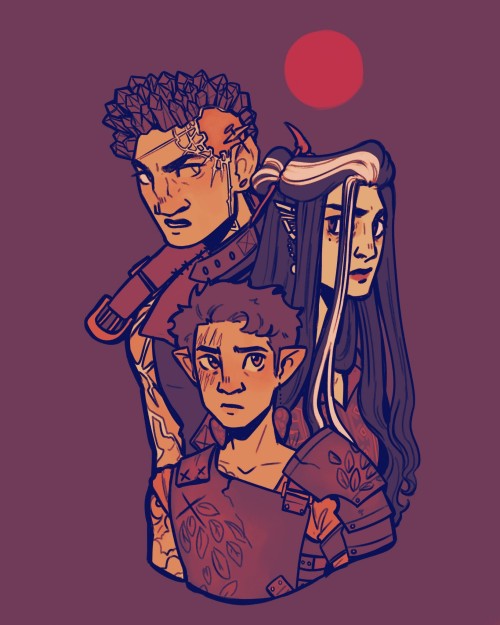10 Lethal Injuries To Add Pain To Your Writing
10 Lethal Injuries to Add Pain to Your Writing
Prev: Non-Lethal Injury Ideas
Need some creative ways to give your characters a real fight for survival? Here are 10 ideas:
1. Punctured Artery
A puncture to major arteries like the femoral artery (thigh), the carotid artery (neck), or radial artery (arm) can cause rapid blood loss. It starts off with a sharp pain, weakness, lightheadedness and eventually can lead to hypovolemic shock. Requires urgent medical attention.
2. Punctured Eye Socket
A punctured eye socket will cause blood vessel damage leading to internal bleeding. I would use this for non-combat characters trying to get away. The eyes are an easy weak spot + you don’t need much strength to cause a critical injury/puncture. Also good for a protag's tragic backstory.
3. Torn Achilles Tendon
A torn Achilles tendon can result in severe bleeding if nearby arteries or veins are damaged. Your character will be forced to hobble away as pain causes their foot to swell and bruise. Plus, you can easily adjust the pain levels per your scene, from swift cuts to explosive jumps.
4. Neck Hyperextension (Hangman’s Fracture)
This injury will fracture the C2 vertebra and can lead to spinal cord damage, paralysis or sudden death. This isn’t a light injury your character can come back from, so I would suggest using it only when you’re aiming for death.
5. Pierced Lung
A punctured lung will lead to a pneumothorax where air escapes into the chest cavity, collapsing the lung. Characters with this injury may have difficulty breathing, chest pain, and a cough that produces frothy blood (all the dramatics you need).
6. Severe Concussion
A severe concussion will lead to confusion, vomiting, immobility and memory loss. More dangerously, brain swelling, internal bleeding and damaged brain tissue. Plus, it has a long recovery period.
7. Shattered Pelvis
If you need something severe that restricts mobility but also causes severe pain then this is perfect! Involves signs of shock, internal bleeding, numbness, swelling—really a lot of things. Can occur if OC falls from a high place, hit repeatedly, car accident, etc.
8. Internal Bleeding from Blunt Force Trauma
I like using this when you need something subtle since it doesn't show immediate symptoms. Over time, they will feel weak, cold, nauseous, and intense pain. Perfect if you want that 'everyone made it out then suddenly someone collapses' moment.
9. Intestinal Perforation
A sharp blow or penetrating wound can cause a tear in the intestines, leaking bacteria into the body cavity, then peritonitis. It can go from small stomach pain to near death pretty quickly. Without prompt medical care, sepsis can set in, causing organ failure and death.
10. Cut to the Jugular
If you need something more visibly dramatic then go with the classic cut to the jugular. A warm rush of blood will pour out, and blood would spurt with every heartbeat. Causes panic, choking, and internal bleeding too. All the blood and gore you need.
This is a quick, brief list of ideas to provide writers inspiration. Since it is a shorter blog, I have not covered the injuries in detail. Remember the worse the injury the more likely your character is to die (so be realistic folks). Happy writing! :)
Looking For More Writing Tips And Tricks?
Check out the rest of Quillology with Haya; a blog dedicated to writing and publishing tips for authors!
Instagram Tiktok
More Posts from Briarisaac and Others
I was bored, have an eye +progress gif and reference (jumpscare❗️)




snork mimimi...i miss them

folly

*holds Molly gently* you better fix my mental state rn
10 Non-Lethal Injuries to Add Pain to Your Writing
New Part: 10 Lethal Injury Ideas
If you need a simple way to make your characters feel pain, here are some ideas:
1. Sprained Ankle
A common injury that can severely limit mobility. This is useful because your characters will have to experience a mild struggle and adapt their plans to their new lack of mobiliy. Perfect to add tension to a chase scene.
2. Rib Contusion
A painful bruise on the ribs can make breathing difficult, helping you sneak in those ragged wheezes during a fight scene. Could also be used for something sport-related! It's impactful enough to leave a lingering pain but not enough to hinder their overall movement.
3. Concussions
This common brain injury can lead to confusion, dizziness, and mood swings, affecting a character’s judgment heavily. It can also cause mild amnesia.
I enjoy using concussions when you need another character to subtly take over the fight/scene, it's an easy way to switch POVs. You could also use it if you need a 'cute' recovery moment with A and B.
4. Fractured Finger
A broken finger can complicate tasks that require fine motor skills. This would be perfect for characters like artists, writers, etc. Or, a fighter who brushes it off as nothing till they try to throw a punch and are hit with pain.
5. Road Rash
Road rash is an abrasion caused by friction. Aka scraping skin. The raw, painful sting resulting from a fall can be a quick but effective way to add pain to your writing. Tip: it's great if you need a mild injury for a child.
6. Shoulder Dislocation
This injury can be excruciating and often leads to an inability to use one arm, forcing characters to confront their limitations while adding urgency to their situation. Good for torture scenes.
7. Deep Laceration
A deep laceration is a cut that requires stitches. As someone who got stitches as a kid, they really aren't that bad! A 2-3 inch wound (in length) provides just enough pain and blood to add that dramatic flair to your writing while not severely deterring your character.
This is also a great wound to look back on since it often scars. Note: the deeper and wider the cut the worse your character's condition. Don't give them a 5 inch deep gash and call that mild.
8. Burns
Whether from fire, chemicals, or hot surfaces, burns can cause intense suffering and lingering trauma. Like the previous injury, the lasting physical and emotional trauma of a burn is a great wound for characters to look back on.
If you want to explore writing burns, read here.
9. Pulled Muscle
This can create ongoing pain and restrict movement, offering a window to force your character to lean on another. Note: I personally use muscle related injuries when I want to focus more on the pain and sprains to focus on a lack of mobility.
10. Tendonitis
Inflammation of a tendon can cause chronic pain and limit a character's ability to perform tasks they usually take for granted. When exploring tendonitis make sure you research well as this can easily turn into a more severe injury.
This is a quick, brief list of ideas to provide writers inspiration. Since it is a shorter blog, I have not covered the injuries in detail. This is inspiration, not a thorough guide. Happy writing! :)
Looking For More Writing Tips And Tricks?
Check out the rest of Quillology with Haya; a blog dedicated to writing and publishing tips for authors!
Instagram Tiktok

I’ll be your champion.
hope u like it i worked so hard to make him as pathetic as possible

[ID: A digital illustration of Orym from Critical Role. He is tucking a blue flower into the sash around his waist, looking at the flower with a slight smile. End description.]
Blue flower in a storm (remind you of someone?)

Concerned for the party and Exandria as a whole, excited that these three are stuck together

For anyone worried about missing anything in BG3 or replaying the game and wanting to find something they missed there’s a ton of checklists available online and I’m just gonna post the ones I’ve been using for all the acts in case anybody else wants to reference them!




-
 miasarah liked this · 2 weeks ago
miasarah liked this · 2 weeks ago -
 surgeonofswords reblogged this · 2 weeks ago
surgeonofswords reblogged this · 2 weeks ago -
 darlingnemesis liked this · 2 weeks ago
darlingnemesis liked this · 2 weeks ago -
 woahdudecoolboat liked this · 2 weeks ago
woahdudecoolboat liked this · 2 weeks ago -
 asirenbyanyothername liked this · 2 weeks ago
asirenbyanyothername liked this · 2 weeks ago -
 noelle151 reblogged this · 2 weeks ago
noelle151 reblogged this · 2 weeks ago -
 noelle151 liked this · 2 weeks ago
noelle151 liked this · 2 weeks ago -
 mygarbagedumpofablog reblogged this · 2 weeks ago
mygarbagedumpofablog reblogged this · 2 weeks ago -
 epicdude365 reblogged this · 2 weeks ago
epicdude365 reblogged this · 2 weeks ago -
 epicdude365 liked this · 2 weeks ago
epicdude365 liked this · 2 weeks ago -
 bunnywolfwritesabook liked this · 2 weeks ago
bunnywolfwritesabook liked this · 2 weeks ago -
 kodzukenweb liked this · 2 weeks ago
kodzukenweb liked this · 2 weeks ago -
 canis-2bs liked this · 2 weeks ago
canis-2bs liked this · 2 weeks ago -
 honeybeetlejuice liked this · 2 weeks ago
honeybeetlejuice liked this · 2 weeks ago -
 cdjasper liked this · 2 weeks ago
cdjasper liked this · 2 weeks ago -
 donaviolet reblogged this · 2 weeks ago
donaviolet reblogged this · 2 weeks ago -
 ccmscms77 liked this · 3 weeks ago
ccmscms77 liked this · 3 weeks ago -
 bebenotbaby liked this · 3 weeks ago
bebenotbaby liked this · 3 weeks ago -
 iveseenthatlovebefore liked this · 3 weeks ago
iveseenthatlovebefore liked this · 3 weeks ago -
 aspashia liked this · 3 weeks ago
aspashia liked this · 3 weeks ago -
 midcrowds liked this · 3 weeks ago
midcrowds liked this · 3 weeks ago -
 briarisaac reblogged this · 3 weeks ago
briarisaac reblogged this · 3 weeks ago -
 briarisaac liked this · 3 weeks ago
briarisaac liked this · 3 weeks ago -
 willpapilio liked this · 3 weeks ago
willpapilio liked this · 3 weeks ago -
 luvys liked this · 3 weeks ago
luvys liked this · 3 weeks ago -
 my-own-personal-hell liked this · 3 weeks ago
my-own-personal-hell liked this · 3 weeks ago -
 lizannw liked this · 3 weeks ago
lizannw liked this · 3 weeks ago -
 thefoxwell liked this · 3 weeks ago
thefoxwell liked this · 3 weeks ago -
 darlinemaquiavella liked this · 3 weeks ago
darlinemaquiavella liked this · 3 weeks ago -
 deadsquidward2 liked this · 3 weeks ago
deadsquidward2 liked this · 3 weeks ago -
 antihell liked this · 4 weeks ago
antihell liked this · 4 weeks ago -
 quaker-oatz reblogged this · 4 weeks ago
quaker-oatz reblogged this · 4 weeks ago -
 kimnamshiks liked this · 4 weeks ago
kimnamshiks liked this · 4 weeks ago -
 philcoulson-redtapeninja reblogged this · 4 weeks ago
philcoulson-redtapeninja reblogged this · 4 weeks ago -
 watermeezer reblogged this · 4 weeks ago
watermeezer reblogged this · 4 weeks ago -
 watermeezer liked this · 4 weeks ago
watermeezer liked this · 4 weeks ago -
 newdawnhorizon reblogged this · 4 weeks ago
newdawnhorizon reblogged this · 4 weeks ago -
 aleahthechef liked this · 1 month ago
aleahthechef liked this · 1 month ago -
 bonniesverse liked this · 1 month ago
bonniesverse liked this · 1 month ago -
 nothing-to-seehere liked this · 1 month ago
nothing-to-seehere liked this · 1 month ago -
 azianxpersuasionwrites reblogged this · 1 month ago
azianxpersuasionwrites reblogged this · 1 month ago -
 jomymarquis reblogged this · 1 month ago
jomymarquis reblogged this · 1 month ago -
 istopsomewherewaitingforyou liked this · 1 month ago
istopsomewherewaitingforyou liked this · 1 month ago -
 daisymerollingg liked this · 1 month ago
daisymerollingg liked this · 1 month ago -
 azianxpersuasion liked this · 1 month ago
azianxpersuasion liked this · 1 month ago -
 rkwriting2027 reblogged this · 1 month ago
rkwriting2027 reblogged this · 1 month ago -
 therk77 liked this · 1 month ago
therk77 liked this · 1 month ago -
 youresuchatease liked this · 1 month ago
youresuchatease liked this · 1 month ago -
 myniceisniceblogbloglog reblogged this · 1 month ago
myniceisniceblogbloglog reblogged this · 1 month ago
